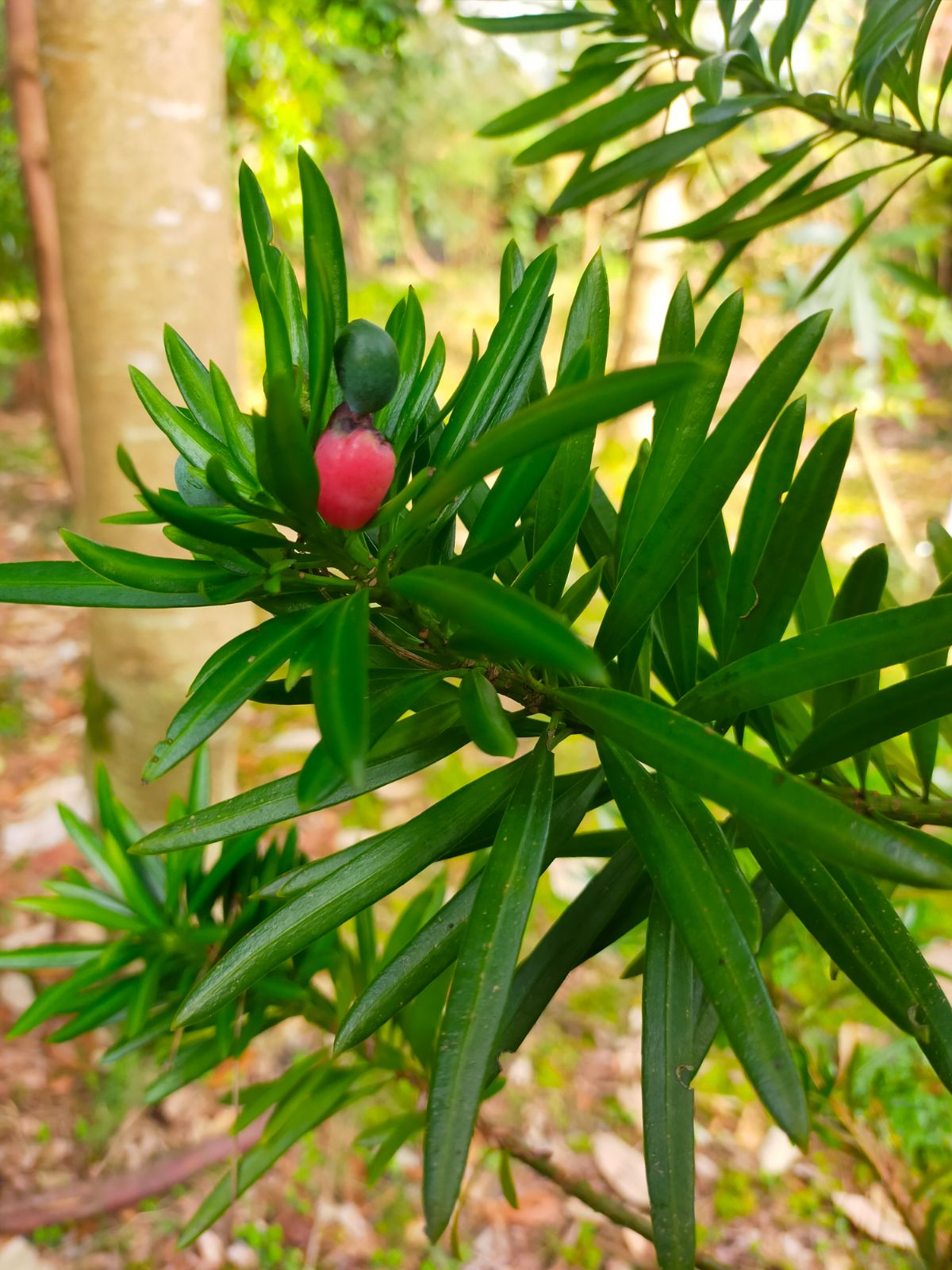Podocarpus oleifolius
Sponsor
Kindly sponsored by
The British Conifer Society in memory of Derek Spicer VMM, founder member.
Credits
Tom Christian (2023)
Recommended citation
Christian, T. (2023), 'Podocarpus oleifolius' from the website Trees and Shrubs Online (treesandshrubsonline.
Genus
Common Names
- Pino de Pasto
- Pinete
- Saucecillo
- Chilca
- Pino Aparrado
Synonyms
- Nageia oleifolia (D. Don) Kuntze
Other taxa in genus
- Podocarpus acutifolius
- Podocarpus acutifolius × lawrencei
- Podocarpus acutifolius × nivalis
- Podocarpus acutifolius × totara
- Podocarpus brassii
- Podocarpus costalis
- Podocarpus drouynianus
- Podocarpus elatus
- Podocarpus elongatus
- Podocarpus guatemalensis
- Podocarpus henkelii
- Podocarpus laetus
- Podocarpus laetus × nivalis
- Podocarpus lambertii
- Podocarpus latifolius
- Podocarpus lawrencei
- Podocarpus lawrencei × nivalis
- Podocarpus macrophyllus
- Podocarpus matudae
- Podocarpus milanjianus
- Podocarpus nakaii
- Podocarpus neriifolius
- Podocarpus nivalis
- Podocarpus nubigenus
- Podocarpus parlatorei
- Podocarpus pilgeri
- Podocarpus pseudobracteatus
- Podocarpus salignus
- Podocarpus spinulosus
- Podocarpus totara
Tree to 25(–30) m, trunk straight, to 1.5 m dbh, shrubby in exposed sites at altitude. Bark thin, yellowish-brown and smooth at first, grey-brown and scaly with age. Branchlets with prominent grooves and leaf scars. Terminal buds of leading shoots subglobose, 3–5 mm wide, with short, imbricate, rounded or ovate scales 3–4 mm long; lateral buds globose with thick, rounded scales. Leaves of established trees leathery, lanceolate to linear, extremely variable even on the same tree, (1.5–)4–9 × (0.5–)0.7–1.2 cm, largest on shaded shoots (much larger on juvenile plants, to 15 × 2 cm), straight to slightly curved, base tapering, petiolate, apex tapering to an acute or obtuse apex; upper surface dark green with a narrow midrib in a central groove; lower surface dull green, midrib forming a small but conspicuous ridge, sometimes grooved near the tip, with two stomatal bands either side. Pollen cones sessile, solitary, cylindrical, 25–30 × 3–4 mm. Seed cones solitary on short peduncles, with two bracts which fuse to become a swollen, fleshy receptacle 6–10 mm long, maturing red. Seed including the epimatium ovoid-globose, olive green, 7–8 mm long. (Farjon 2017).
Distribution Bolivia Colombia Costa Rica Ecuador El Salvador Guatemala Honduras Mexico Chiapas, Oaxaca, Veracruz Nicaragua Panama Peru Venezuela
Habitat In a diverse range of habitats across a large range, in montane to alpine forests at (800–)1200–3300 m asl, most commonly above 2000 m asl.
USDA Hardiness Zone 9
RHS Hardiness Rating H3
Conservation status Least concern (LC)
The New World Podocarpus oleifolius is a component of high altitude cloud forest from southern Mexico to Peru. There are two accepted subspecies: subsp. costaricensis (J.Buchholz & N.E.Gray) Silba, distributed from southern Mexico to Panama; and subsp. oleifolius, distributed in north west South America (Plants of the World Online 2023). Both have a tenuous presence in temperate cultivation. The only plant traced growing outdoors in our proper study area is one of Costa Rican provenance (subsp. costaricensis) at Tregrehan, Cornwall, UK, which has made a wispy, multistemmed shrub c. 2.5 m tall, its best stem about 4 cm dbh (pers. obs. 2022). Rob Nicholson introduced material from Colombia (subsp. oleifolius) to the US in 1998 under Nicholson 98/484 and this has found its way into several botanic gardens, including Edinburgh in the UK, where it is maintained under glass (Royal Botanic Garden Edinburgh 2022). Neither taxon is grown at Florida’s Montgomery Botanical Center (Royal Botanic Garden Edinburgh 2023) but it probably has some potential as an ornamental in the southern states and in southern California, and in regions like Australia. Material sourced from the upper limits of its altitudinal range should be sought out where possible, even in these very mild areas.

